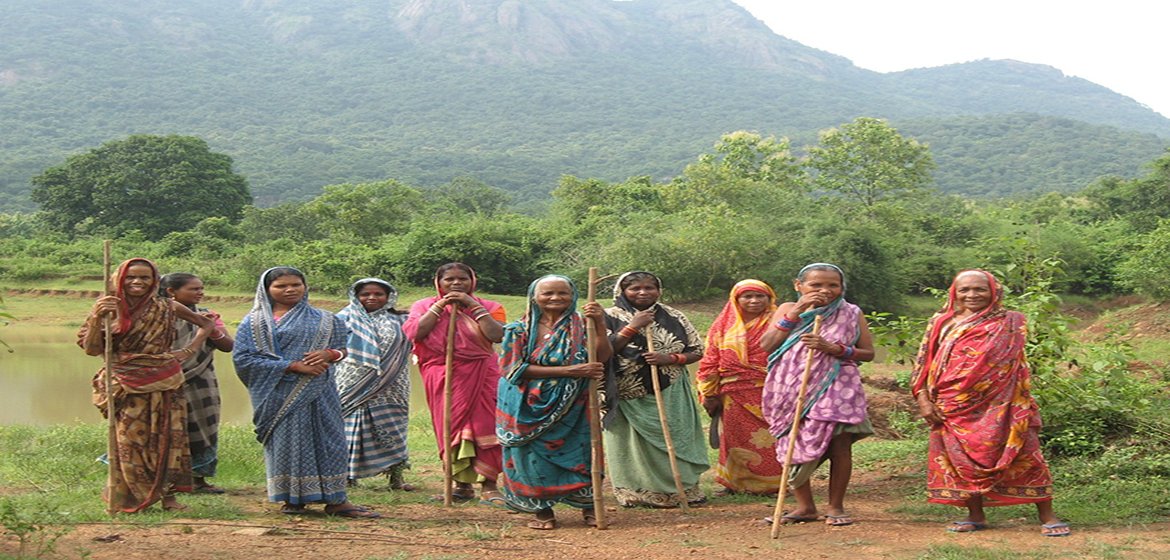By Vandana Dhoop, Independent Research Consultant
Lessons from Odisha’s Nayagarh where women leaders from Adivasi and other forest-dwelling communities are protecting their forests and families.
In welcome news for India’s forest communities, the state of Odisha has 14 community rights (CR) and community forest resource rights (CFR) titles for 24 villages in its Nayagarh district, under the country’s 2006 Forest Rights Act.
The government’s move to grant these titles is praiseworthy for one key reason: they recognize women’s critical role in protecting community forests. There are over 60 villages in Nayagarh district where women struggle every day to protect and manage the forests – services that have historically gone unrecognized. Four out of the 24 villages that received the titles – Surukabadi, Hatibadi, Kodalapalli, and Sinduria – have “Forest Protection Committees” formed entirely by women.
Forests in Nayagarh are rich in varieties of tubers, fruits, medicinal plants, bamboo, and Sal trees, but threats of illegal logging and smuggling have haunted the area for decades. However, since the formation of women-led forest protection committees and patrolling contingents, instances of logging and smuggling have drastically decreased, helping to regenerate the forests’ rich biodiversity.
The fact that the Committees’ activities are carried out entirely by women applying traditional knowledge and democratic decision-making processes is what makes this forest conservation system so unique.
When women take over
For the women belonging to the Kondh tribe, each morning begins with a march to a local meeting spot, with sticks in hand to patrol the forest that sustains them and their families. Some of these women have been patrolling and protecting the forests for over 30 years. But it wasn’t always this way.
Members of the Kondh tribe recall a time when only men conducted patrolling duties, and the community was facing a massive depletion in forest cover.

While some of the male members were working hands-in-glove with the loggers and smugglers, others were unable to put up a strong enough defense. The reduction in forest cover resulted in women having to travel farther distances in search of food, wood, and water for their families’ sustenance.
That was when women from across the district stepped up to take over the responsibilities of protecting and patrolling the forests. As by some independent forest conservation groups, since the takeover, forest cover has improved remarkably as a direct result of the women’s institutionalized methods of protecting the forests.
The forest protection committees led by women maintain a roster detailing the patrol duties so as to equally divide the workload. Thengapalli, or ‘turn to wield the stick’ is a common , where after a woman’s patrol shift is over, she leaves a stick outside the house of the woman next in line.
Strict rules also help regulate indiscriminate use of forest resources by community members, including:
- Wood chopping is banned, and a community member can only use twigs or branches that have already fallen from the trees for fuelwood.
- Permission must be obtained before cutting down trees to repair one’s home or for festivities.
- Carrying match sticks immediately before the summer season is disallowed.
- Practicing regeneration techniques instead of conventional plantation methods. For instance, instead of plucking out the entire root of a fruit tree or plant, only a portion is cut so that the plant can regrow.
- During the monsoon season, grazing is prohibited to help trees and plants regenerate naturally.
- The women the Siali Utsav festival to mark the sowing and plantation of siali seeds that produce creepers, leaves of which are useful for making leaf plates.
- Transgressors are fined and asked to formally apologize to the community for their mistakes.
These rules are not determined by isolated committee members; each village resident – including men, women, and youth – can contribute to the discussion.
Although these methods have been developed as a way to increase food security and address livelihood concerns, these practices have also improved the ecological balance of the forests and made it more accessible to various animal and bird species, such as elephants since is a popular elephant corridor.
Most state governments in India underestimate the potential of granting community forest rights that contribute to the protection, preservation, and promotion of Indigenous practices and knowledge that helps mitigate climate change.
However, states that have granted CFR claims tend to reap in more ways than one. Despite this, the tally of approved CR and CFR titles remains low. According to a progress report released by the Ministry of Tribal Affairs, out of 150,319 claims submitted by communities, state governments had granted a mere 77,502 by February 2021.
At a time when India and the world are grappling with ways to reverse biodiversity loss, mitigate deforestation, and conserve forests, the experiences of Nayagarh’s women offer useful lessons and wisdom for policy-makers, conservation actors, and women’s movements across the world.
Source:
Related to SDG 5: Gender equality and SDG 15: Life on land



